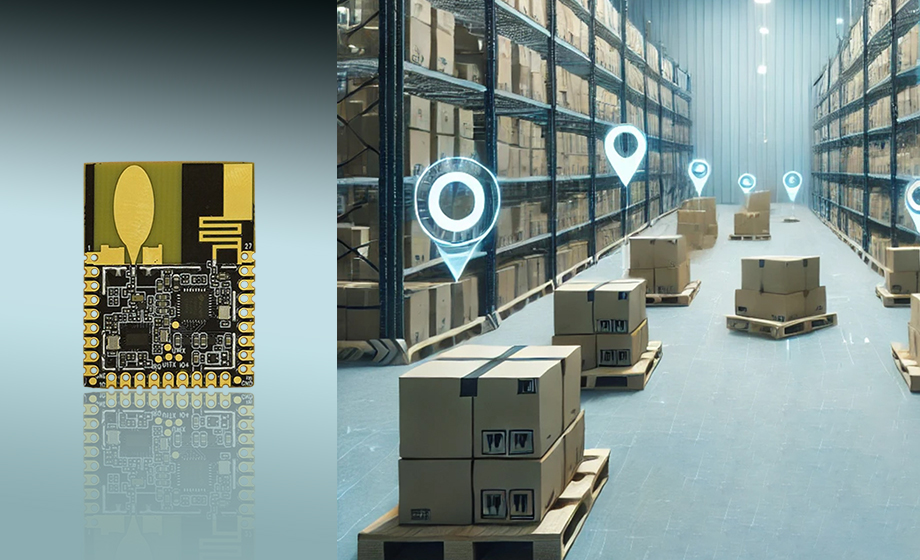With the rapid development of Internet of Things technology, indoor positioning technology has become the focus of attention in many fields. Among many indoor positioning technologies, Ultra-Wideband (UWB) technology has gradually become the leader in the field of indoor positioning with its high precision, low power consumption, anti-interference and other characteristics. In this paper, the application and advantages of UWB range-ranging wireless module in indoor positioning will be deeply discussed.

I. Overview of UWB technology
UWB technology is a new wireless communication technology, which uses nanosecond non-sinusoidal narrow pulses to transmit data, thus having a bandwidth of GHz magnitude. Compared with the traditional narrowband system, UWB technology has the advantages of strong penetration, low power consumption, good anti-multipath effect and high security. Therefore, UWB technology has unique advantages in the field of indoor positioning.
Second, UWB indoor positioning principle
UWB indoor positioning technology is mainly based on the Time of Flight (TOF) ranging principle. Specifically, by measuring the propagation time of the UWB signal between the sending and receiving ends, combined with the speed of light, the distance between two points can be calculated. Due to the short pulse width and high bandwidth of the UWB signal, sub-centimeter ranging accuracy can be achieved.
In UWB indoor positioning system, it usually includes three parts: positioning base station, positioning label and positioning background. The positioning base station is deployed in the space and communicates with the positioning label to realize the positioning function of the label. The positioning tag needs to be worn by the person or thing being located to communicate with the base station by sending and receiving signals. The positioning background is responsible for receiving the positioning data uploaded by the base station, and running the positioning algorithm to calculate the coordinate position of the label in real time.
Third, UWB can range wireless module characteristics
High precision: The UWB range-ranging wireless module uses the TOF ranging principle to achieve sub-centimeter ranging accuracy, providing a high accuracy guarantee for indoor positioning.
Low power consumption: The UWB wireless module adopts a low-power design to extend the service life of the device and is suitable for battery-powered scenarios.
Strong anti-interference ability: UWB signal has strong anti-interference ability in the transmission process, and can maintain stable performance in a complex electromagnetic environment.
Strong flexibility: UWB wireless module can achieve 1-to-1, 1-to-many or many-to-many ranging application mode, to meet the positioning needs in different scenarios.
4. UWB indoor positioning application scenarios
Chemical industry: In chemical enterprises, the location of personnel, vehicles and materials can be accurately located by deploying UWB positioning base stations in the factory. Combined with the UWB positioning management platform, functions such as safe area control, personnel scheduling management, real-time trajectory monitoring and SOS call alarm can be realized to improve the safety of personnel and materials.
Power grid: In the power industry, UWB indoor positioning technology can supervise the implementation of the "two votes and three systems" specification, and ensure the implementation of production operations in accordance with the specification through integrated linkage and visual presentation and other ways to avoid accidents.
Intelligent manufacturing: In the field of intelligent manufacturing, UWB technology can achieve the accurate positioning of equipment and personnel, improve production efficiency and quality. For example, in logistics warehousing, the location of goods and people can be tracked in real time through UWB positioning technology to optimize warehousing and transportation processes.
Smart medicine: In the medical field, UWB indoor positioning technology can help hospitals achieve accurate management of personnel, equipment and drugs. For example, in the operating room, the location of doctors and nurses can be tracked in real time, ensuring a safe and efficient surgical procedure.
V. Challenges and prospects of UWB indoor positioning technology
Although UWB indoor positioning technology has many advantages, it still faces some challenges in practical application. For example, how to achieve complete time synchronization between the positioning node and the reference base station, how to reduce the influence of multipath effect on the positioning accuracy and so on. In the future, with the continuous development and optimization of technology, UWB indoor positioning technology will be widely used in more fields.
In addition, with the continuous development of 5G, AI and other technologies, UWB indoor positioning technology will also be combined with these technologies to achieve more intelligent and efficient applications. For example, combined with the high speed and low latency characteristics of 5G network, UWB indoor positioning technology can achieve more real-time and accurate positioning services; Combined with AI technology, intelligent scheduling and management of personnel, equipment and goods can be achieved.
Vi. Conclusion
UWB range-ranging wireless module has a wide application prospect and huge market potential in the field of indoor positioning. Through continuous technological innovation and application expansion, UWB indoor positioning technology will bring people more convenient, efficient and safe indoor positioning services.



